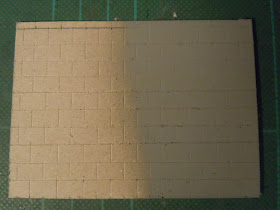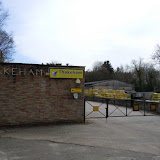My usual preference is embossed plastic sheets, especially Slater's, as they are easy to work with, give a good relief, and can be painted to suit. However I haven't found a block-work wall sheet in 7mm scale. The Slater's 4mm paving is the closest match, although the "blocks" have the wrong aspect ratio really (not quite sure of the size either).

(Image taken from http://www.gaugemaster.com)
Scalescenes do a downloadable print-yourself "brickpaper"of concrete block walling, which seems to have the right colours and appearance. It's a long time since I have used brickpapers and I worry about them being damaged by scenic work etc., and perhaps most about their lack of texture and relief - especially in 7mm scale. Representing different types of block and construction would be tricky too. On the other hand it would save a lot of time.
(Image from http://scalescenes.com/products/TX39-Block-Wall)
I have also been experimenting with home-made methods. The first is scribing card, which I have tried various implements with. Although the card has a good texture the scribing is tedious, difficult to get precise, and the scribed line is "fluffy". Below is a sample, the right side has been sprayed with grey primer.
I have also been experimenting with home-made methods. The first is scribing card, which I have tried various implements with. Although the card has a good texture the scribing is tedious, difficult to get precise, and the scribed line is "fluffy". Below is a sample, the right side has been sprayed with grey primer.

I've also experimented with expanded polystyrene foam, in this case pizza bases. I've seen this used to good effect before, and indeed the results are encouraging. Scribing is still tedious but seems to come out much better, the texture is good too. The bottom piece has been primed, amazingly the aerosol didn't dissolve the foam. However I am not sure the blocks are regular and sharp enough to be concrete, the courses too rounded and corners lacking definition. This would be great for stonework, but for concrete I'm still unsure...



















